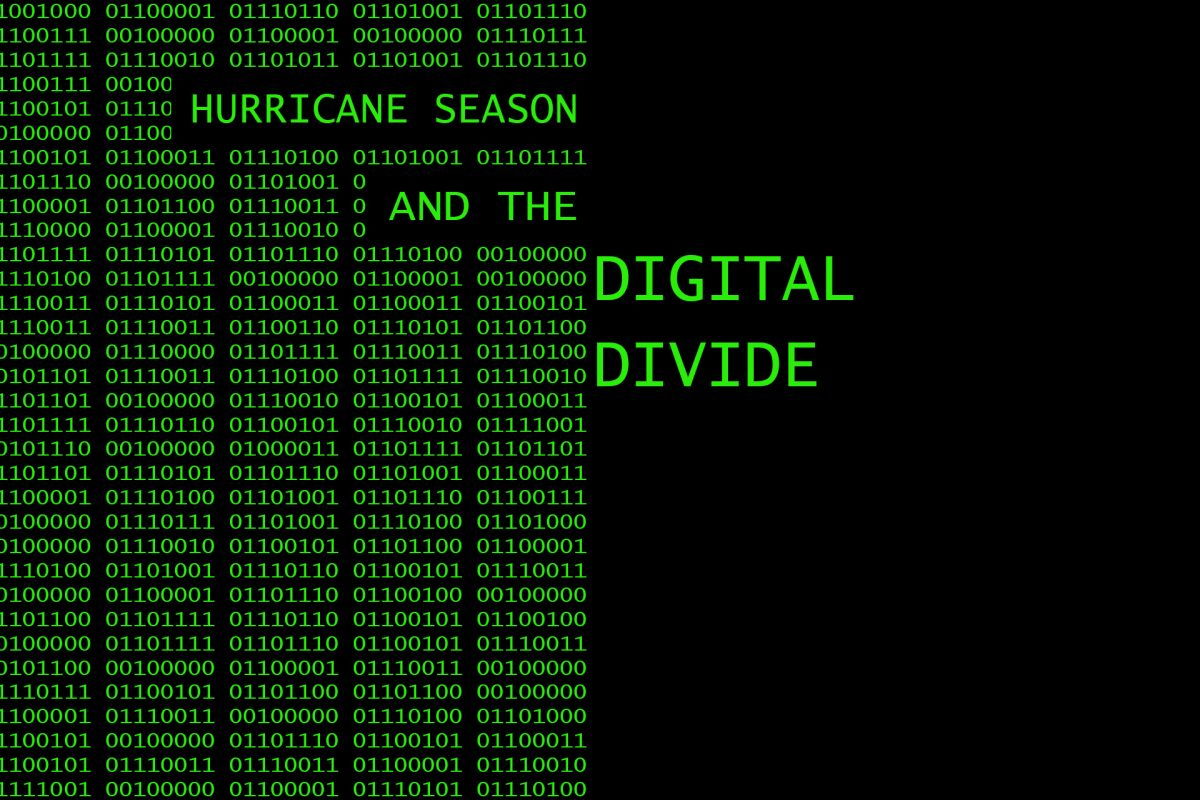Since experiencing the widespread devastation of Hurricane Irma in 2017, South Florida legislators have taken steps to address much-needed repairs. While procuring $1.4 billion in federal aid has been a step in the right direction, comprehensive policy making and greater outreach to Miami’s disconnected population is needed to best prepare for upcoming hurricanes.
South Florida’s susceptibility to major hurricanes is exacerbated by its most contemporary conundrum: the digital divide. In 2015, two South Florida cities were listed in the top five worst-connected cities in the United States, using information from the U.S. Census: In Hialeah and Miami, 34 and 37 percent of homes have no internet access, respectively.
Oftentimes, a lack of internet access is more prevalent in low-income and impoverished communities. This may lead to a vicious cycle, in which the impoverished have no means by which to improve their circumstances. Nowadays especially, the internet is crucial for job searches, paying bills, applying for welfare benefits and staying informed about how to best prepare for a storm—so much so that internet access is becoming more of a necessity than a privilege.
Having a working internet connection is also paramount to a successful post-storm recovery. Communicating with relatives and loved ones, as well as the necessary authorities, is all made possible by the internet. Without the internet, a dire situation can’t be properly helped, as communicating how dire it is is out of the question.
The internet availability statistics have major implications for hurricane preparedness in the region. When families have little or no access to the internet, they are excluded from the wealth of information and resources they’d otherwise have access to. For example, Miami-Dade County’s mobile applications include information on public safety and emergency preparedness. But disconnected communities are at a disadvantage. Lawmakers should prioritize providing affordable or free internet to those who are on the bad side of the digital divide. Such measures would ensure that more South Floridians can prepare for a hurricane, given that the required resources would be more readily available.
However, even when the county makes storm preparedness and evacuation resources available on digital media, they aren’t always as useful as they should be. According to Miami-Dade County’s Hurricane Irma Report & Recommendations, information on evacuation centers prior to Hurricane Irma was not up-to-date. This led to residents going to centers that were either closed, or never designated as evacuation centers in the first place. In addition, there was a lack of information on what residents should bring to shelters, and the 3-1-1 information phone line could not support the volume of phone calls it received.
To maximize South Florida’s readiness for another major hurricane, policymakers must work together to implement meaningful change, as opposed to simply throwing money at a problem and expecting it to be fixed. Community outreach is key here, as legislators will have to determine on a case-by-case basis what each community or area needs to best prepare themselves for a major storm.
For instance, a measure was passed in Broward County which required generators in assisted living facilities such as nursing homes. This rule came into place following the deaths of individuals who lost electricity while residing in a nursing home. Here, lawmakers identified the specific issue in their community and acted accordingly.
Currently, Miami-Dade County has Community Emergency Response Teams, or CERTs, which aim to educate and train the public in disaster response and preparedness. Spreading awareness of CERTs should become a priority for local leaders to maximize their communities’ participation and education in storm-related practices.
Preparing for a major storm takes considerable effort on all levels of our society. Lawmakers must introduce impactful legislation and identify what their constituents need, while members of a community should also do their part and work together to ensure the highest possible level of preparedness. Most importantly, internet access in disconnected communities must be ameliorated, as many storm-related resources and emergency systems rely on it.
Benjamin Estrada is a freshman majoring in communication honors – journalism.






